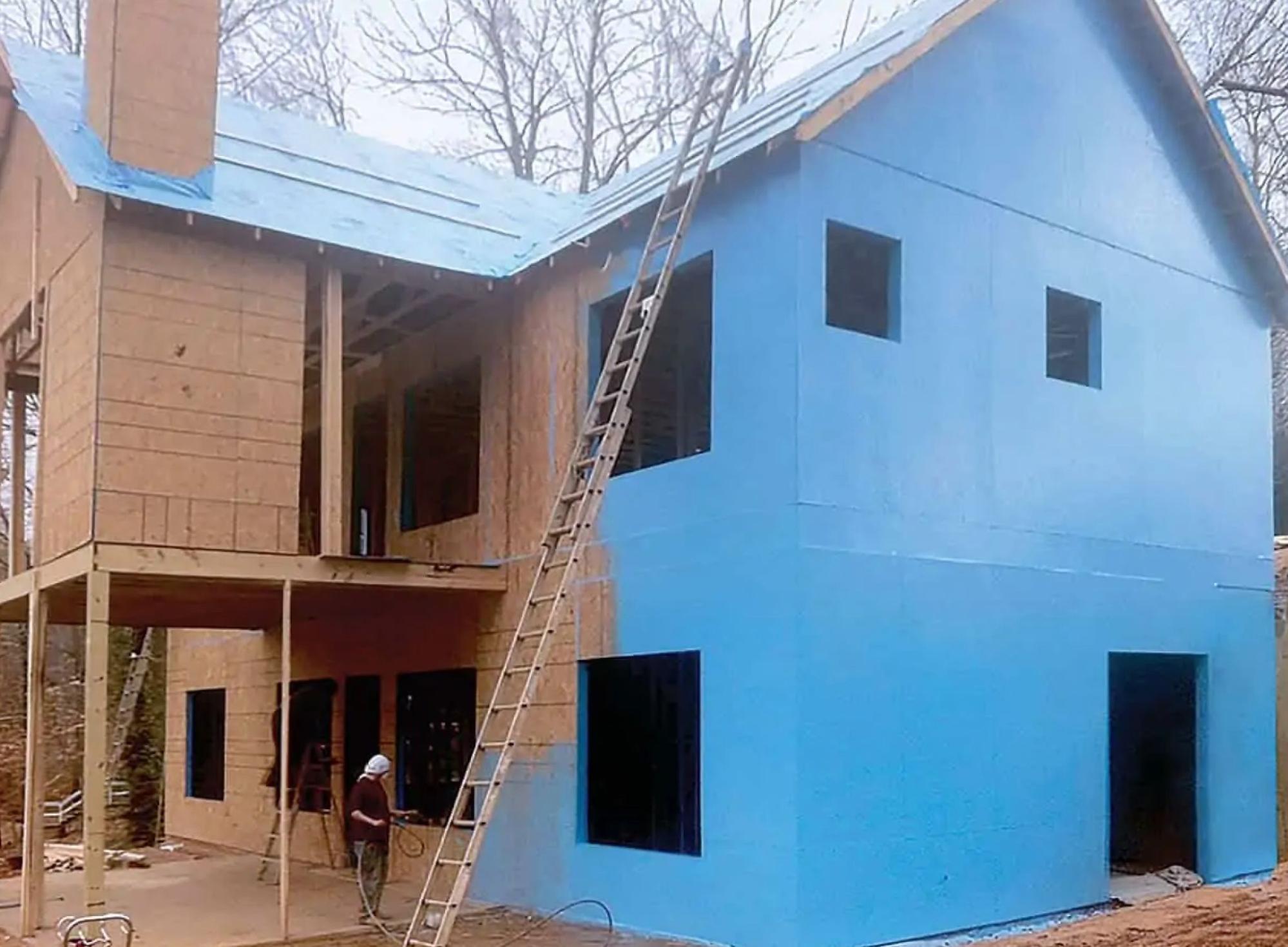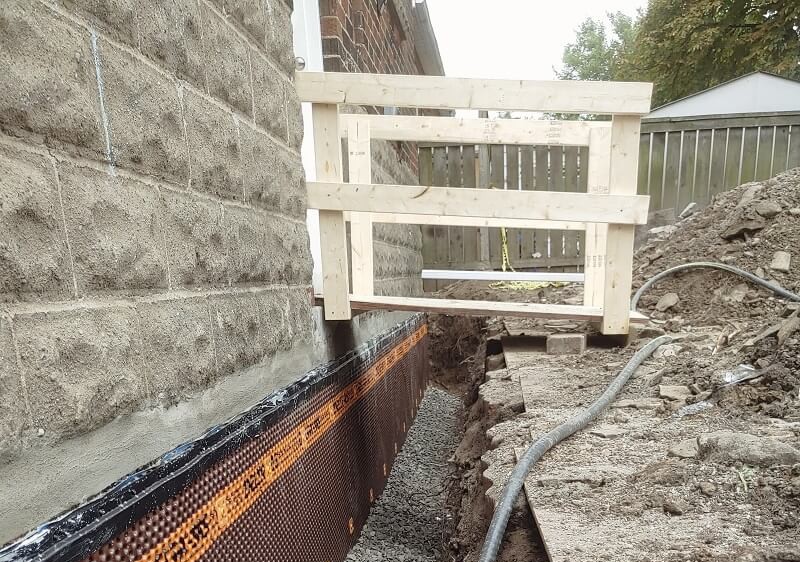Top-rated companies for damp removal newcastle: What to look for
Top-rated companies for damp removal newcastle: What to look for
Blog Article
Understanding the Importance of Damp Proofing in Fighting Structural Damage
Moist proofing offers as a crucial defense against dampness infiltration in buildings. This protective procedure can stop significant structural damage, yet numerous property proprietors continue to be not aware of its value. Recognizing the indicators of moisture and recognizing the numerous options available can be essential. Overlooking damp proofing can lead to serious effects. What are the specific risks and remedies that residential property proprietors should consider?
What Perspires Proofing and How Does It Function?
Wet proofing functions as a vital barrier versus wetness breach in structures. mould removal newcastle. This process includes using certain products and methods to stop water from penetrating wall surfaces, floorings, and various other architectural components. Usually, damp proofing can be accomplished with the installment of damp evidence membrane layers, finishings, or the usage of specialized sealants.These techniques work by producing a protective layer that prevents wetness motion, guaranteeing that the indoor setting remains completely dry and healthy and balanced. Damp proofing is particularly essential in areas vulnerable to high humidity or groundwater, as it assists keep the integrity of the structure over time.Moreover, efficient wet proofing adds to power performance by avoiding warmth loss related to wet settings. By dealing with prospective moisture concerns prior to they rise, damp proofing works as an aggressive action in guarding structures from the harmful results of water damage, inevitably prolonging their life-span and preserving their value
Common Indicators of Dampness in a Building
Wetness issues within a structure can manifest via several recognizable indications that indicate the visibility of wetness. One popular sign is the appearance of water discolorations on wall surfaces or ceilings, which commonly shows wetness seepage. Furthermore, bubbling or peeling off paint can recommend that excess moisture is trapped beneath the surface area, resulting in wear and tear. An additional typical indicator is the presence of mold and mold, which grow in wet conditions and can frequently be determined by their stuffy smell. Additionally, a surge in moisture degrees can create condensation on windows and various other surfaces, highlighting moisture troubles. Warped or unequal floor covering might signify underlying dampness that jeopardizes architectural honesty. Acknowledging these indicators early can aid mitigate potential damages and maintain a risk-free living atmosphere. Normal evaluations and punctual activity are crucial in dealing with wetness concerns prior to they rise.
The Risks of Ignoring Damp Proofing
Disregarding wet proofing can bring about considerable risks to a structure's architectural honesty, as moisture buildup might compromise wall surfaces and foundations. Furthermore, prolonged moisture develops an environment for mold growth, posturing serious wellness threats to residents. Addressing these risks is vital for ensuring both safety and long life of the property.
Architectural Honesty Threats
When property owners overlook the importance of efficient damp proofing, they reveal their properties to significant architectural integrity dangers. Extended dampness seepage can lead to the advancement of mold and mildew, which weakens fundamental components and can endanger overall security. In addition, excess moisture can deteriorate concrete and brickwork, causing splits and architectural failures. Wood parts are particularly vulnerable; they can rot and lose load-bearing ability, positioning severe risks to the building's structure. Without treatment damp problems might draw in bugs, such as termites, which even more intensify structural degeneration. Inevitably, disregarding damp proofing steps can cause expensive fixings and potential safety and security risks, underscoring the essential duty of aggressive wet management in protecting the stability of homes.
Wellness Hazard Problems
Just how can a relatively small oversight cause serious health and wellness dangers? Ignoring damp proofing can produce a setting conducive to mold and mildew development, which positions substantial wellness threats. Mold spores can set off allergic responses, respiratory issues, and other health problems, particularly in prone populaces such as children, the senior, and individuals with pre-existing conditions. Furthermore, relentless dampness can draw in pests like rats and bugs, which bring diseases that further compromise health and wellness. The presence of dampness likewise contributes to a decline in interior air high quality, intensifying asthma and other respiratory system conditions. The failing to address wet issues not only endangers architectural stability but likewise endangers the health of owners, highlighting the critical requirement for reliable moist proofing procedures.
Various Kinds Of Damp Proofing Solutions
Different aspects can add to damp concerns in buildings, picking the appropriate wet proofing service is necessary for maintaining architectural integrity. Several options are readily available, each tailored to specific conditions.One typical solution is a damp-proof membrane layer (DPM), generally constructed from polyethylene or bitumen, which is installed in walls and floors to stop dampness access. An additional option is damp-proof training courses (DPC), which are layers of water resistant product positioned within walls to block increasing damp.Chemical damp proofing entails injecting waterproofing chemicals into wall surfaces to create an obstacle versus moisture. Additionally, external therapies such as tanking, which includes applying a water resistant layer to the beyond foundations, can be reliable in protecting against water penetration.Each service has its benefits and is chosen based on the building's details problems, ecological problems, and long-term maintenance factors to consider, making sure ideal security against damp-related damages.

The Expense of Damp Damage vs. Prevention
Comprehending the financial implications of wet damages contrasted to prevention highlights the relevance of positive actions. The prices connected with moist damages can be considerable, consisting of repair services to architectural aspects, mold removal, and prospective health-related expenses. Property owners may deal with significant financial strain if extensive damage occurs, leading to enhanced insurance premiums and shed property value.In comparison, purchasing wet proofing services is generally even more cost-effective. First more info expenses for avoidance techniques, such as enhancing or mounting damp-proof membranes water drainage systems, are usually outweighed by the long-lasting cost savings from staying clear of costly repairs. Additionally, protecting against damp problems can improve a building's overall value and appeal, making it a sensible investment. When assessing the expense of wet damages versus avoidance, it becomes clear that taking proactive actions can protect economic rate of interests and maintain the integrity of the property gradually.
Choosing the Right Damp Proofing Technique for Your Residential or commercial property
Which moist proofing method is most appropriate for a details property commonly depends upon numerous elements, including the building's age, existing wetness concerns, and regional environmental conditions. For older structures, conventional techniques such as bitumen membrane layers or cementitious coverings may be a lot more effective, as they can give a robust obstacle against climbing wet. In contrast, more recent buildings might profit from modern-day remedies like infused damp-proof programs, which are less invasive and can be tailored to certain moisture challenges.Additionally, residential or commercial properties in locations with high water tables or hefty rainfall might require advanced techniques, such as cavity wall water drainage systems or outside waterproofing. Home owners ought to likewise consider the specific products used in their building's construction, as some techniques might not work. Inevitably, a thorough analysis by a professional can guide homeowner in picking the most efficient wet proofing approach tailored to their distinct scenarios.
Keeping Your Damp Proofing System Gradually
Normal maintenance of a damp proofing system is crucial for ensuring its lasting efficiency and shielding a building from moisture-related damage. Home owners must conduct regular assessments to determine any signs of wear or compromise in the moist proofing layer. This consists of checking for splits, peeling paint, or mold and mildew development, which may suggest dampness intrusion.Additionally, it is advisable to tidy gutters and downspouts on a regular basis to stop water build-up around the foundation. Reapplying membranes or sealers may be essential if wear and tear is observed.Engaging specialist solutions for regular assessments can further boost the longevity of the system. These specialists can give understandings into potential vulnerabilities and advise timely fixings.
Often Asked Concerns
For How Long Does Damp Proofing Therapy Last Before Needing Fixings?
The durability of wet proofing treatment commonly ranges from 10 to 30 years, depending upon variables such as the approach made use of, environmental conditions, and upkeep techniques. Normal assessments can assist identify when repair work might be required.
Is Do It Yourself Damp Proofing Effective Compared to Specialist Solutions?
The performance of do it yourself damp proofing varies significantly. damp removal newcastle. While some individuals may accomplish adequate results, expert services generally assure detailed options, leveraging know-how and quality materials to stop future concerns much more reliably than many do it yourself efforts
Can Damp Proofing Improve Indoor Air High Quality?
The inquiry of whether damp proofing can improve indoor air top quality emerges regularly. Efficient damp proofing decreases dampness degrees, consequently decreasing mold development and irritants, ultimately adding to a healthier indoor atmosphere for residents.
Are There Particular Rules for Damp Proofing in Various Locations?
Regulations for wet proofing differ by region, frequently influenced by regional building ordinance and ecological conditions. Compliance guarantees reliable dampness control, safeguarding frameworks and promoting safety and security, which highlights the need for adherence to these details laws.

What Are the Long-Term Advantages of Proper Damp Proofing?
The lasting benefits of correct moist proofing include enhanced architectural honesty, minimized maintenance prices, boosted indoor air quality, and boosted residential property value. These benefits contribute to a healthier living setting and long term lifespan of buildings. Usually, damp proofing can be attained with the setup of wet proof membranes, finishes, or the usage of specialized sealants.These techniques function by creating a safety layer that inhibits moisture activity, making sure that the indoor setting remains healthy and balanced and dry. Damp proofing is particularly important in areas susceptible to high moisture or groundwater, as it aids preserve the integrity of the structure over time.Moreover, effective moist proofing contributes to power effectiveness by stopping warmth loss associated with moist environments. Neglecting damp proofing can lead to considerable risks to a structure's architectural integrity, as wetness build-up might compromise walls and foundations (damp removal newcastle). Different variables can contribute to damp concerns in structures, selecting the proper moist proofing remedy is vital for maintaining architectural stability. Which moist proofing technique is most ideal for a particular home usually depends on various aspects, including the structure's age, existing moisture problems, and neighborhood ecological problems
Report this page